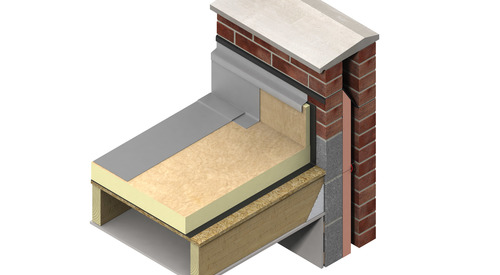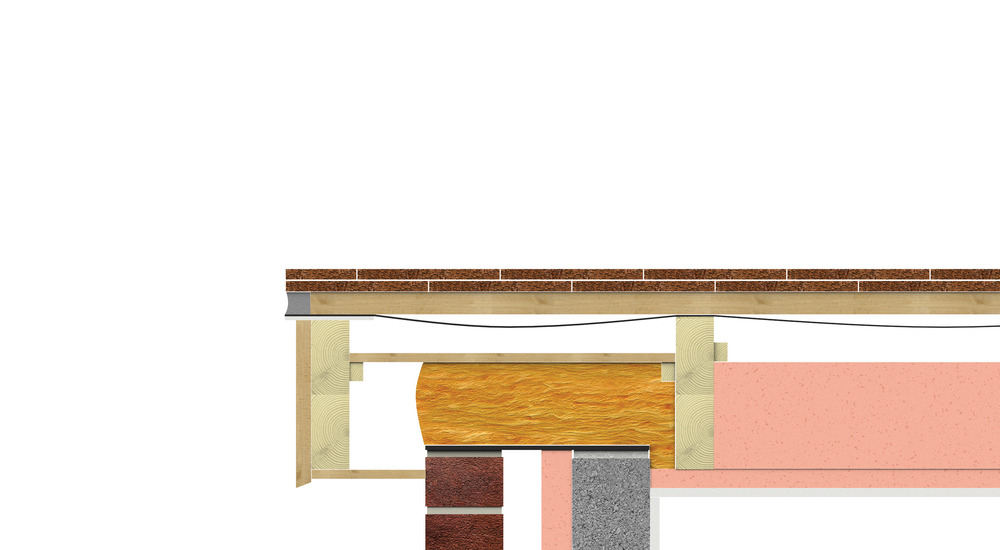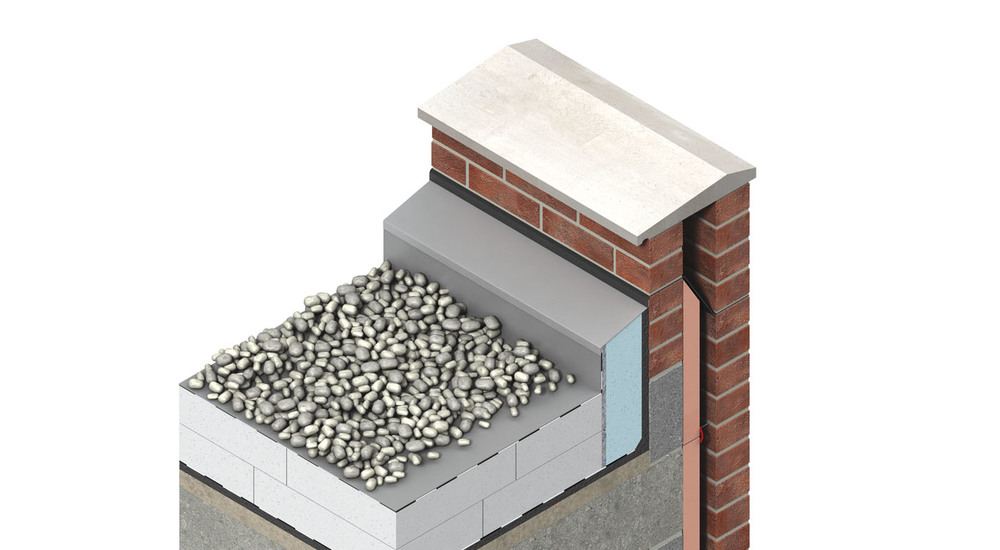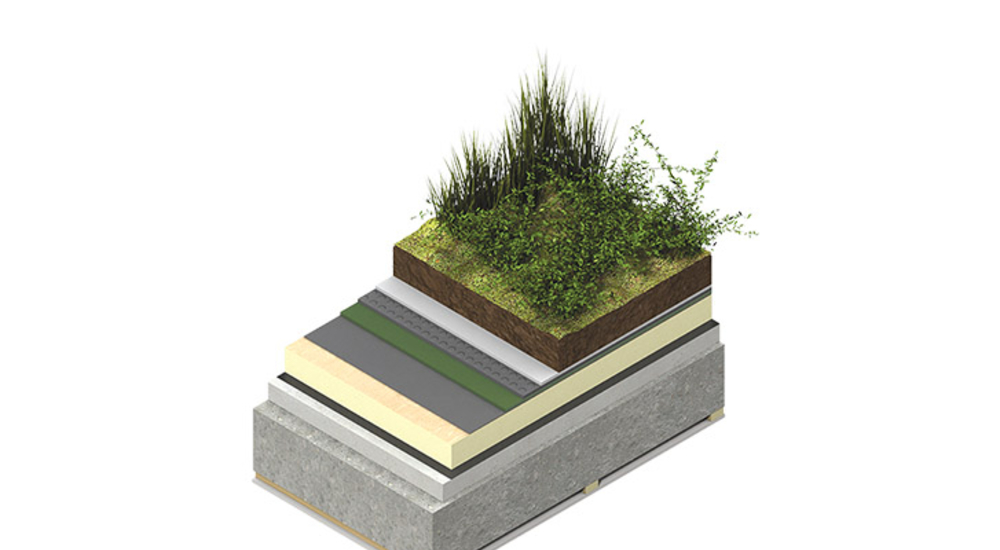- MENU
-
FLAT ROOFING
-
Shop By Type
- Shop All Flat Roofing
- EPDM Rubber Roofing
- GRP Roofing
- Liquid Roofing
- Torch on Felt Roofing
- Outdoor & Balcony Flooring
Shop By Brand
- ClassicBond
- RESITRIX
- SkyGuard
- ARBOFLEX PU
- RESTEC GRP1010
- RESTEC Flexitec 2020
- PROGRP
- Cromapol
- Sure Edge
- Steinel
- Leister
- RubberTech
- Whitesales
Shop By Accessories
- Vapour Barriers
- Roof Lights & Lanterns
- Pedestals & Supports
- Lead Alternative
- EPDM Roof Trims
- EPDM Accessories
- GRP & Liquid Roofing Trims
- GRP Outlets
Shop By Roofing Kit
- Shop All Flat Roofing Kits
- Rubber Roofing Kits
- Rubber Gutter Kits
- Shed Roofing Kits
- GRP Fibreglass Roof Kits
- Liquid Roofing Kits
Shop By Calculator
Knowledge Hub
-
-
PITCHED ROOFING
-
GREEN ROOFING
-
INSULATION
-
Shop By Type
- Shop All Insulation
- Flat Roof Insulation Boards
- Tapered Insulation Boards
- Multipurpose PIR Boards
- Phenolic Insulation Boards
- Insulated Plasterboards
- Glass Wool Insulation
- Mineral Wool Insulation
- Multifoil & Foil Insulation
- Insulation Accessories
Shop By Brand
- ACTIS Insulation
- ALUTRIX Vapour Barrier
- Celotex Insulation
- EcoTherm Insulation
- ELOTENE Vapour Barrier
- Isover Insulation
- Kingspan Insulation
- Recticel Insulation
- Rockwool Insulation
- Soprema Insulation
- Super Foil Insulation
- YBS Insulation
-
-
FIXINGS
-
Shop By Application
- Shop All Fixings
- Roofing & Cladding
- Facade & Rainscreen Fasteners
- Flat Roofing Fasteners
- Masonry & Concrete Screws
- Fixings Accessories
Shop By Type
- Warm Deck Flat Roof Fixings & Screws
- Self Drilling Fasteners
- Self Tapping Screws
- Opticore Fixings
- Colorfast
- Storm Washers
- Rivets
- Facade Anchors
- Insulation Support Anchors & Washers
-
- CONTACT US
Tablet
MENU
- FLAT ROOFING
- SHOP BY TYPE
- SHOP BY BRAND
- SHOP BY ACCESSORIES
- SHOP BY TOOLS
- SHOP BY KITS
- SHOP BY CALCULATOR
- EPDM Rubber Knowledge Hub
- GRP & Liquid Roofing Knowledge Hub
- PITCHED ROOFING
- Artificial Slate Roof Tiles
- Lead Alternative
- Pitched Roof Insulation
- Multifoil & Foil Insulation
- GREEN ROOFING
- Shop All Green Roofing
- Green Roof Kits
- Sedum / Wildflower Trays
- Substrate
- Drainage Boards
- Edging & Trims
- Green Roof Kit Builder
- INSULATION
- SHOP BY TYPE
- SHOP BY BRAND
- SHOP BY APPLICATION
- Tapered Insulation Scheme - Get a Quote
- Knowledge Hub
- FIXINGS
- SHOP BY APPLICATION
- SHOP BY TYPE
- CALCULATORS & ROOF KIT BUILDERS
- ClassicBond EPDM Calculator
- SkyGuard EPDM Calculator
- RESITRIX Roof Kit Builder
- ClassicBond PRO EPDM Roof Kit Builder
- ARBOFLEX Roof Kit Builder
- RESTEC GRP1010 Roof Kit Builder
- RESTEC Flexitec 2020 Roof Kit Builder
- PROGRP Roof Kit Builder
- Green Roof Kit Builder
- Tapered Insulation Scheme - Get a Quote
- SHOP BY TYPE
- Shop All Flat Roofing
- EPDM Rubber Roofing
- GRP Roofing
- Liquid Roofing
- Torch on Felt Roofing
- Outdoor & Balcony Flooring
- SHOP BY BRAND
- ClassicBond
- RESITRIX
- SkyGuard
- ARBOFLEX PU
- RESTEC GRP1010
- RESTEC Flexitec 2020
- PROGRP
- Cromapol
- Sure Edge
- Leister
- Steinel
- RubberTech
- Whitesales
- SHOP BY ACCESSORIES
- Vapour Barriers
- Roof Lights & Lanterns
- Pedestals & Supports
- Lead Alternative
- EPDM Roof Trims
- EPDM Accessories
- GRP Outlets
- EPDM Accessories
- SHOP BY TOOLS
- Heat Guns
- EPDM Roofing Tools
- GRP & Liquid Roofing Tools
- SHOP BY KITS
- Shop All Flat Roofing Kits
- Rubber Roofing Kits
- Rubber Gutter Kits
- Shed Roofing Kits
- GRP Fibreglass Roof Kits
- Liquid Roofing Kits
- SHOP BY CALCULATOR
- ClassicBond Calculator
- SkyGuard Calculator
- RESITRIX Roof Kit Builder
- ClassicBond PRO EPDM Roof Kit Builder
- ARBOFLEX Roof Kit Builder
- RESTEC GRP1010 Roof Kit Builder
- RESTEC Flexitec 2020 Roof Kit Builder
- PROGRP Roof Kit Builder
- SHOP BY TYPE
- Flat Roof Insulation Boards
- Tapered Insulation Boards
- Multipurpose PIR Boards
- Phenolic Insulation Boards
- Insulated Plasterboards
- Glass Wool Insulation
- Mineral Wool Insulation
- Multifoil & Foil Insulation
- Insulation Accessories
- SHOP BY BRAND
- ACTIS Insulation
- ALUTRIX Vapour Barrier
- Celotex Insulation
- EcoTherm Insulation
- ELOTENE Vapour Barrier
- Isover Insulation
- Kingspan Insulation
- Recticel Insulation
- Rockwool Insulation
- Soprema Insulation
- Super Foil Insulation
- YBS Insulation
- SHOP BY APPLICATION
- Acoustic Insulation
- Floor Insulation
- Wall Insulation
- Cavity Wall Insulation
- External Wall Insulation
- Ceiling Insulation
- Loft Insulation
- Cold Deck Flat Roof Insulation
- Warm Deck Insulation
- Pitched Roof Insulation
- SHOP BY APPLICATION
- Shop All Fixings
- Roofing & Cladding
- Facade & Rainscreen Fasteners
- Flat Roofing Fasteners
- Masonry & Concrete Screws
- Fixings Accessories
- SHOP BY TYPE
- Warm Deck Flat Roof Fixings & Screws
- Self Drilling Fasteners
- Self Tapping Screws
- Opticore Fixings
- Colorfast
- Storm Washers
- Rivets
- Facade Anchors
- MENU
-
FLAT ROOFING
-
- Shop All Flat Roofing
- EPDM Rubber Roofing
- GRP Roofing
- Liquid Roofing
- Torch on Felt Roofing
- Outdoor & Balcony Flooring
- ClassicBond
- RESITRIX
- SkyGuard
- ARBOFLEX PU
- RESTEC GRP1010
- RESTEC Flexitec 2020
- PROGRP
- Cromapol
- Sure Edge
- Leister
- Steinel
- RubberTech
- Whitesales
- Vapour Barriers
- Roof Lights & Lanterns
- Pedestals & Supports
- Lead Alternative
- EPDM Roof Trims
- EPDM Accessories
- GRP Outlets
- EPDM Accessories
- Shop All Flat Roofing Kits
- Rubber Roofing Kits
- Rubber Gutter Kits
- Shed Roofing Kits
- GRP Fibreglass Roof Kits
- Liquid Roofing Kits
- ClassicBond Calculator
- SkyGuard Calculator
- RESITRIX Roof Kit Builder
- ClassicBond PRO EPDM Roof Kit Builder
- ARBOFLEX Roof Kit Builder
- RESTEC GRP1010 Roof Kit Builder
- RESTEC Flexitec 2020 Roof Kit Builder
- PROGRP Roof Kit Builder
-
-
PITCHED ROOFING
-
GREEN ROOFING
-
INSULATION
-
- Shop All Insulation
- Flat Roof Insulation Boards
- Tapered Insulation Boards
- Multipurpose PIR Boards
- Phenolic Insulation Boards
- Insulated Plasterboards
- Glass Wool Insulation
- Mineral Wool Insulation
- Multifoil & Foil Insulation
- Insulation Accessories
- ACTIS Insulation
- ALUTRIX Vapour Barrier
- Celotex Insulation
- EcoTherm Insulation
- ELOTENE Vapour Barrier
- Isover Insulation
- Kingspan Insulation
- Recticel Insulation
- Rockwool Insulation
- Soprema Insulation
- Super Foil Insulation
- YBS Insulation
- Acoustic Insulation
- Floor Insulation
- Wall Insulation
- Cavity Wall Insulation
- External Wall Insulation
- Ceiling Insulation
- Loft Insulation
- Cold Deck Flat Roof Insulation
- Warm Deck Insulation
- Pitched Roof Insulation
-
-
FIXINGS
-
CALCULATORS & ROOF KIT BUILDERS
- KNOWLEDGE HUB
- CONTACT US
Mobile
MENU
- FLAT ROOFING
- SHOP BY TYPE
- SHOP BY BRAND
- SHOP BY ACCESSORIES
- SHOP BY TOOLS
- SHOP BY KITS
- SHOP BY CALCULATOR
- EPDM Rubber Knowledge Hub
- GRP & Liquid Roofing Knowledge Hub
- PITCHED ROOFING
- Artificial Slate Roof Tiles
- Lead Alternative
- Pitched Roof Insulation
- Multifoil & Foil Insulation
- GREEN ROOFING
- Shop All Green Roofing
- Green Roof Kits
- Sedum / Wildflower Trays
- Substrate
- Drainage Boards
- Edging & Trims
- Green Roof Kit Builder
- INSULATION
- SHOP BY TYPE
- SHOP BY BRAND
- SHOP BY APPLICATION
- Tapered Insulation Scheme - Get a Quote
- Knowledge Hub
- FIXINGS
- SHOP BY APPLICATION
- SHOP BY TYPE
- CALCULATORS & ROOF KIT BUILDERS
- ClassicBond EPDM Calculator
- SkyGuard EPDM Calculator
- RESITRIX Roof Kit Builder
- ClassicBond PRO EPDM Roof Kit Builder
- ARBOFLEX Roof Kit Builder
- RESTEC GRP1010 Roof Kit Builder
- RESTEC Flexitec 2020 Roof Kit Builder
- PROGRP Roof Kit Builder
- Green Roof Kit Builder
- Tapered Insulation Scheme - Get a Quote
- SHOP BY TYPE
- Shop All Flat Roofing
- EPDM Rubber Roofing
- GRP Roofing
- Liquid Roofing
- Torch on Felt Roofing
- Outdoor & Balcony Flooring
- SHOP BY BRAND
- ClassicBond
- RESITRIX
- SkyGuard
- ARBOFLEX PU
- RESTEC GRP1010
- RESTEC Flexitec 2020
- PROGRP
- Cromapol
- Sure Edge
- Leister
- Steinel
- RubberTech
- Whitesales
- SHOP BY ACCESSORIES
- Vapour Barriers
- Roof Lights & Lanterns
- Pedestals & Supports
- Lead Alternative
- EPDM Roof Trims
- EPDM Accessories
- GRP Outlets
- EPDM Accessories
- SHOP BY TOOLS
- Heat Guns
- EPDM Roofing Tools
- GRP & Liquid Roofing Tools
- SHOP BY KITS
- Shop All Flat Roofing Kits
- Rubber Roofing Kits
- Rubber Gutter Kits
- Shed Roofing Kits
- GRP Fibreglass Roof Kits
- Liquid Roofing Kits
- SHOP BY CALCULATOR
- ClassicBond Calculator
- SkyGuard Calculator
- RESITRIX Roof Kit Builder
- ClassicBond PRO EPDM Roof Kit Builder
- ARBOFLEX Roof Kit Builder
- RESTEC GRP1010 Roof Kit Builder
- RESTEC Flexitec 2020 Roof Kit Builder
- PROGRP Roof Kit Builder
- SHOP BY TYPE
- Flat Roof Insulation Boards
- Tapered Insulation Boards
- Multipurpose PIR Boards
- Phenolic Insulation Boards
- Insulated Plasterboards
- Glass Wool Insulation
- Mineral Wool Insulation
- Multifoil & Foil Insulation
- Insulation Accessories
- SHOP BY BRAND
- ACTIS Insulation
- ALUTRIX Vapour Barrier
- Celotex Insulation
- EcoTherm Insulation
- ELOTENE Vapour Barrier
- Isover Insulation
- Kingspan Insulation
- Recticel Insulation
- Rockwool Insulation
- Soprema Insulation
- Super Foil Insulation
- YBS Insulation
- SHOP BY APPLICATION
- Acoustic Insulation
- Floor Insulation
- Wall Insulation
- Cavity Wall Insulation
- External Wall Insulation
- Ceiling Insulation
- Loft Insulation
- Cold Deck Flat Roof Insulation
- Warm Deck Insulation
- Pitched Roof Insulation
- SHOP BY APPLICATION
- Shop All Fixings
- Roofing & Cladding
- Facade & Rainscreen Fasteners
- Flat Roofing Fasteners
- Masonry & Concrete Screws
- Fixings Accessories
- SHOP BY TYPE
- Warm Deck Flat Roof Fixings & Screws
- Self Drilling Fasteners
- Self Tapping Screws
- Opticore Fixings
- Colorfast
- Storm Washers
- Rivets
- Facade Anchors
- MENU
-
FLAT ROOFING
-
- Shop All Flat Roofing
- EPDM Rubber Roofing
- GRP Roofing
- Liquid Roofing
- Torch on Felt Roofing
- Outdoor & Balcony Flooring
- ClassicBond
- RESITRIX
- SkyGuard
- ARBOFLEX PU
- RESTEC GRP1010
- RESTEC Flexitec 2020
- PROGRP
- Cromapol
- Sure Edge
- Leister
- Steinel
- RubberTech
- Whitesales
- Vapour Barriers
- Roof Lights & Lanterns
- Pedestals & Supports
- Lead Alternative
- EPDM Roof Trims
- EPDM Accessories
- GRP Outlets
- EPDM Accessories
- Shop All Flat Roofing Kits
- Rubber Roofing Kits
- Rubber Gutter Kits
- Shed Roofing Kits
- GRP Fibreglass Roof Kits
- Liquid Roofing Kits
- ClassicBond Calculator
- SkyGuard Calculator
- RESITRIX Roof Kit Builder
- ClassicBond PRO EPDM Roof Kit Builder
- ARBOFLEX Roof Kit Builder
- RESTEC GRP1010 Roof Kit Builder
- RESTEC Flexitec 2020 Roof Kit Builder
- PROGRP Roof Kit Builder
-
-
PITCHED ROOFING
-
GREEN ROOFING
-
INSULATION
-
- Shop All Insulation
- Flat Roof Insulation Boards
- Tapered Insulation Boards
- Multipurpose PIR Boards
- Phenolic Insulation Boards
- Insulated Plasterboards
- Glass Wool Insulation
- Mineral Wool Insulation
- Multifoil & Foil Insulation
- Insulation Accessories
- ACTIS Insulation
- ALUTRIX Vapour Barrier
- Celotex Insulation
- EcoTherm Insulation
- ELOTENE Vapour Barrier
- Isover Insulation
- Kingspan Insulation
- Recticel Insulation
- Rockwool Insulation
- Soprema Insulation
- Super Foil Insulation
- YBS Insulation
- Acoustic Insulation
- Floor Insulation
- Wall Insulation
- Cavity Wall Insulation
- External Wall Insulation
- Ceiling Insulation
- Loft Insulation
- Cold Deck Flat Roof Insulation
- Warm Deck Insulation
- Pitched Roof Insulation
-
-
FIXINGS
-
CALCULATORS & ROOF KIT BUILDERS
- KNOWLEDGE HUB
- CONTACT US
- MENU
-
FLAT ROOFING
-
Shop By Type
- Shop All Flat Roofing
- EPDM Rubber Roofing
- GRP Roofing
- Liquid Roofing
- Torch on Felt Roofing
- Outdoor & Balcony Flooring
Shop By Brand
- ClassicBond
- RESITRIX
- SkyGuard
- ARBOFLEX PU
- RESTEC GRP1010
- RESTEC Flexitec 2020
- PROGRP
- Cromapol
- Sure Edge
- Steinel
- Leister
- RubberTech
- Whitesales
Shop By Accessories
- Vapour Barriers
- Roof Lights & Lanterns
- Pedestals & Supports
- Lead Alternative
- EPDM Roof Trims
- EPDM Accessories
- GRP & Liquid Roofing Trims
- GRP Outlets
Shop By Roofing Kit
- Shop All Flat Roofing Kits
- Rubber Roofing Kits
- Rubber Gutter Kits
- Shed Roofing Kits
- GRP Fibreglass Roof Kits
- Liquid Roofing Kits
Shop By Calculator
Knowledge Hub
-
-
PITCHED ROOFING
-
GREEN ROOFING
-
INSULATION
-
Shop By Type
- Shop All Insulation
- Flat Roof Insulation Boards
- Tapered Insulation Boards
- Multipurpose PIR Boards
- Phenolic Insulation Boards
- Insulated Plasterboards
- Glass Wool Insulation
- Mineral Wool Insulation
- Multifoil & Foil Insulation
- Insulation Accessories
Shop By Brand
- ACTIS Insulation
- ALUTRIX Vapour Barrier
- Celotex Insulation
- EcoTherm Insulation
- ELOTENE Vapour Barrier
- Isover Insulation
- Kingspan Insulation
- Recticel Insulation
- Rockwool Insulation
- Soprema Insulation
- Super Foil Insulation
- YBS Insulation
-
-
FIXINGS
-
Shop By Application
- Shop All Fixings
- Roofing & Cladding
- Facade & Rainscreen Fasteners
- Flat Roofing Fasteners
- Masonry & Concrete Screws
- Fixings Accessories
Shop By Type
- Warm Deck Flat Roof Fixings & Screws
- Self Drilling Fasteners
- Self Tapping Screws
- Opticore Fixings
- Colorfast
- Storm Washers
- Rivets
- Facade Anchors
- Insulation Support Anchors & Washers
-
- CONTACT US
Industry Experts
50 Years Experience
Finance Available
Spread the Cost













